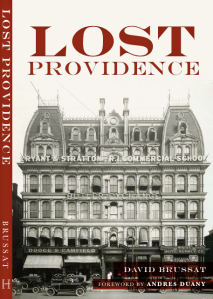Michael Mehaffy, an architectural theorist from Portland, Ore., who often collaborates with mathematician and fellow theorist Nikos Salingaros on treatises combining issues of design with those of science, has sent a lovely photograph he just snapped yesterday of the tallest Orthodox Christian church in the world. It was built in Moscow in 2000 after demolition of the original on the site proposed for the Palace of the Soviets, which was never built.
Of course it goes without saying that rebuilding a memorable building once sacrificed to history is a perfectly honorable project, no matter what the modernists say. Architecture does not always survive, and when its death is an injustice its resurrection is a balm to society’s ravaged soul.
Michael sent these notes, titled “Now that’s resiliency!”:
[The original church] was built from 1812 to 1861, demolished in 1931 for a gigantic and quixotic Stalinist project, never built*, and rebuilt in 2000 – with help from the somewhat mad mayor Luzhkov. [Here is the description on Wikipedia.]
Com’era, dov’era. As it was, where it was. My pic attached is from yesterday.
Notably, Tchaikovsky’s 1812 Overture premiered here in 1882. (Remember, the church’s construction was announced in 1812 as thanks for Russia’s victory over Napoleon.) Yeltsin lay in state here in 2007. Pussy Riot was arrested here in 2012.
The fugue of history goes on. The end of history, Modernism, is a charming (when not malevolent) fantasy.
* The Palace of the Soviets. It would have been 1,600 feet tall, or about 160 stories. Designed by Russians and Socialist Realists Boris Iofan and Vladimir Shchuko. Le Corbusier entered the competition and got his ass whipped. So did Gropius, Mendelsohn, and all the other cool kids of the day. It’s gratifying to know that bad designers lose big competitions once in a while. And bad projects also sometimes fail to get built.
Another infamously destroyed and then reconstructed church was the Frauenkirche, in Dresden, which was demolished during the Allied firebombing of Dresden in World War II and rebuilt in the 1990s. Its speckled appearance arises from the insertion in its masonry of surviving charred blocks saved and put aside after the conflagration. I wrote about it in a blog post that has miraculously survived from my Journal column/blog days, called “A tale of two resurrections,” reprinted on the website http://deutsch-heute.blogspot.com





David,
What a nice coincidence! Your post with Michael’s picture awoke memories of an article I wrote on the New Acropolis Museum in 2007. Here is one paragraph that’s relevant to today’s argument:
“We usually associate the deliberate demolition of churches in our times with the regimes of Joseph Stalin and Nicolae Ceauçescu. Stalin dynamited the superb 19C Cathedral of Christ the Savior to make room for erecting the monstrous Palace of the Soviets. Le Corbusier (another Swiss/French architect, like Tschumi) eagerly took part in the architectural competition without any problems of conscience, but failed to win the commission. Maybe God objected to this project, since the foundations kept flooding, and the proposed modernist building could not be erected. The only thing that could be built on the site was a giant circular open-air swimming pool (not very practical for swimming laps). After the fall of Soviet Communism, the Cathedral of Christ the Savior was rebuilt as closely as possible according to the original plans.”
Best wishes,
Nikos
LikeLike